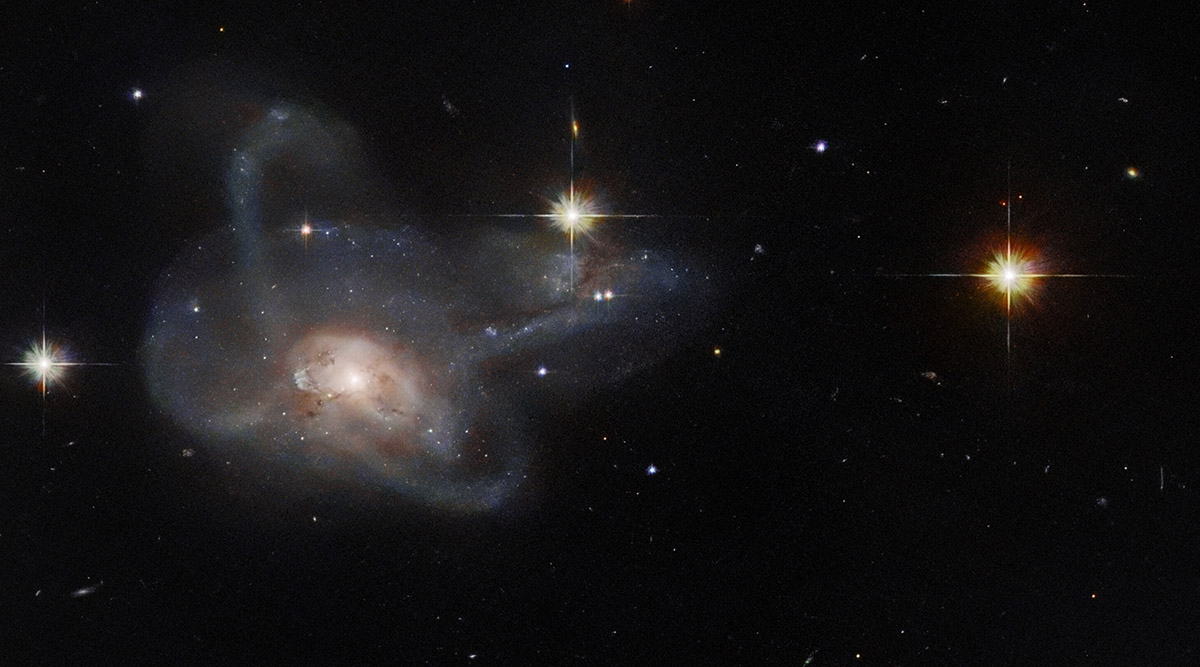 CGCG 396-2 is an unusual multi-armed galaxy merger which lies around 520 million light-years from Earth. (Image credit: ESA/Hubble & NASA, W. Keel)
CGCG 396-2 is an unusual multi-armed galaxy merger which lies around 520 million light-years from Earth. (Image credit: ESA/Hubble & NASA, W. Keel) Sometimes, in the depths of space, entire galaxies can merge and collide with each other, throwing out dust and debris that will lead to the creation of new stars. NASA’s Hubble Space Telescope has captured such an event: the CGCG 396-2 galaxy merger, which is an uncommon multi-armed galaxy merger that is 520 million light-years away from Earth in the direction of the constellation Orion.
The observation was first made by volunteers who are part of the Galaxy Zoo Project. It is a citizen science project where thousands of volunteers classify galaxies to help scientists sort through the vast amounts of data generated by robotic telescopes. The most astronomically intriguing objects from Galaxy Zoo are selected for follow-up observations with Hubble after a public vote. CGCG 396-2 was such a candidate and its image was captured by Hubble’s Advanced Camera for Surveys.
For the project, NASA made a web interface and invited citizen scientists to contribute to classifying more than 900,000 galaxies by eye. Since its inception in 2007, the Galaxy Zoo project has contributed to over 100 peer-reviewed scientific articles and the classification of over 40 million galaxies. Its success also inspired the Zooniverse portal, which hosts many such projects using the same techniques across various fields in astronomy.
In the Galaxy Zoo project, each galaxy is identified by multiple participants because having independent multiple classifications helps the scientists assess how reliable the results are. Depending on the needs of science projects, scientists can use the classifications provided by Galaxy Zoo to allocate valuable telescope time.
Subscriber Only Stories
For example, if astronomers have a project where they need to observe thousands of spiral galaxies and spiral galaxies only, they can take objects classified as spiral galaxies by 100 per cent of the observers, before allocating telescope time to observe them.
- The Indian Express website has been rated GREEN for its credibility and trustworthiness by Newsguard, a global service that rates news sources for their journalistic standards.

